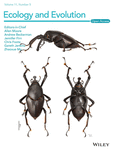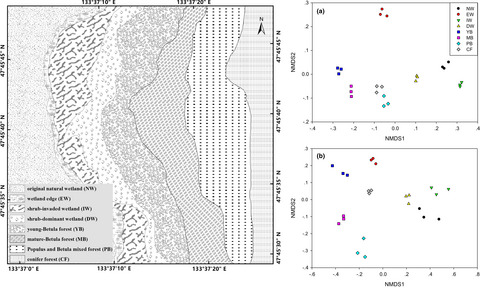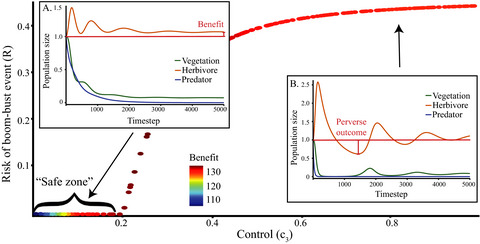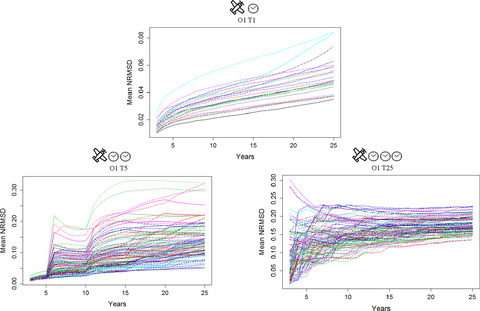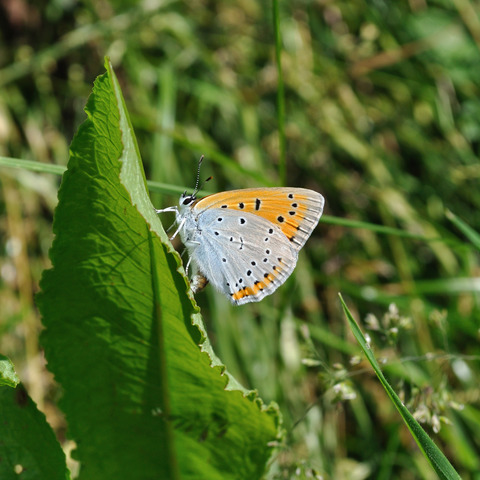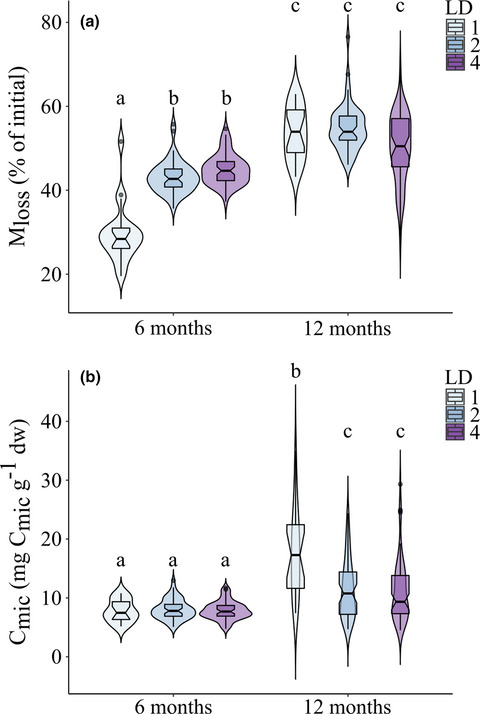Journal list menu
Export Citations
Download PDFs
ISSUE INFORMATION
Issue Information
- Pages: 1937-1939
- First Published: March 2021
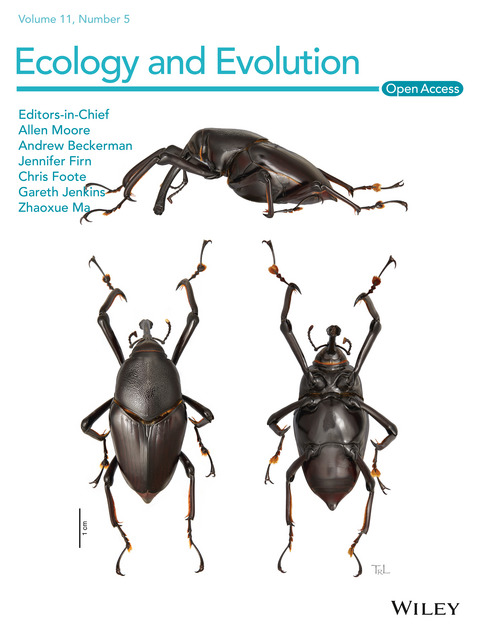
Front Cover: Habitus of the Palm Weevil Macrocheirus prob.praetor Gyllenhal (Coleoptera: Dryophthorinae), an Asian species associated with bamboo (Bambusa sp.). The subfamily includes more than 1200 species and some of the largest weevils in the world. The rostrum is used by the female to prepare the oviposition site deep within the plant. Counterclockwise: dorsal,lateral, and ventral views. Images taken and edited by Taina Litwak (USDA ARS SEL).
ACADEMIC PRACTICE IN ECOLOGY AND EVOLUTION
Demography_Lab, an educational application to evaluate population growth: Unstructured and matrix models
- Pages: 1940-1956
- First Published: 19 January 2021
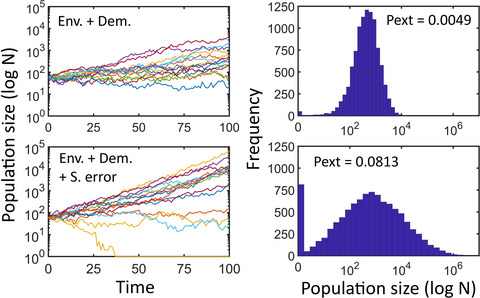
Demography_Lab is an educational application to evaluate the growth of populations. The application uses stochastic unstructured and matrix models and allows for the independent implementation of environmental and demographic stochasticity and sampling error. A large variety of life cycles may be accommodated.
HYPOTHESES
Reproductive interference hampers species coexistence despite conspecific sperm precedence
- Pages: 1957-1969
- First Published: 02 February 2021
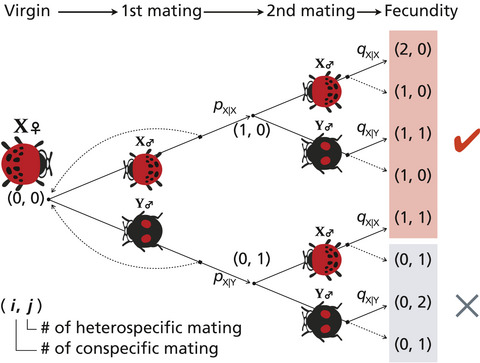
We discussed whether two closely related species exhibiting conspecific sperm precedence can coexist in a local environment in the presence of reproductive interference. We used mathematical models, behavioral experiment, and comparative study. We suggested that conspecific sperm precedence does not reduce the overall cost of reproductive interference sufficiently to allow the interacting species to coexist in the same local environment.
ORIGINAL RESEARCH
Extending the range of additivity in using inclusive fitness
- Pages: 1970-1983
- First Published: 07 February 2021

Inclusive fitness has long been criticized on the grounds that other quantities, such as offspring number, predict gene frequency change in a wider range of mathematical models. We show how the range of applicability of inclusive fitness can be extended, offering one way to utilize inclusive fitness in a wider range of models, and further justification for empiricist's use of inclusive fitness.
First phylogenetic analysis of Dryophthorinae (Coleoptera, Curculionidae) based on structural alignment of ribosomal DNA reveals Cenozoic diversification
- Pages: 1984-1998
- First Published: 09 February 2021
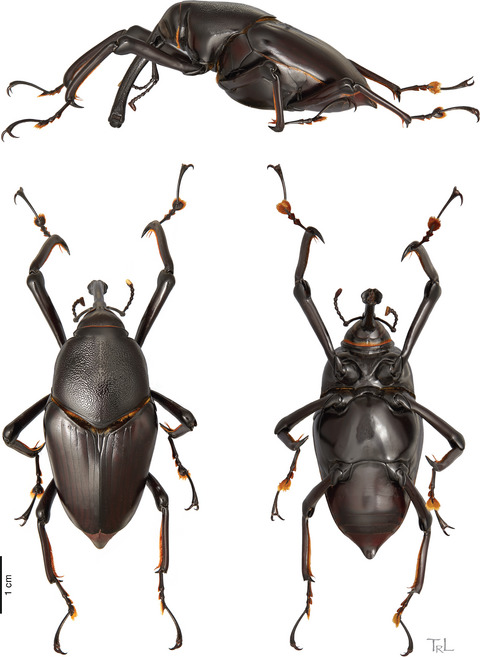
This study presents the first phylogeny of the palm weevil subfamily Dryophthorinae (1,200 species, 153 genera), a group that is mainly associated with monocots and includes major pests, such as the Red and South American Palm Weevils. This study includes genetic sampling of all major lineages worldwide, integrated structural alignment of ribosomal DNA and cutting-edge fossil-calibrated dating analyses. Major findings include confirmation of an unstable classification system; weak and unreliable diagnostic characters, and diversification coinciding with the dominance of flowering plants. The phylogeny enables pest management personnel and researchers to not only make solid predictions about potential new pests, unknown host associations, potential vectors of invasives, endosymbionts, and natural enemies, but also provides insights into the complicated process of diversification of phytophagous insects.
Optimization and validation of a cost-effective protocol for biosurveillance of invasive alien species
- Pages: 1999-2014
- First Published: 10 February 2021
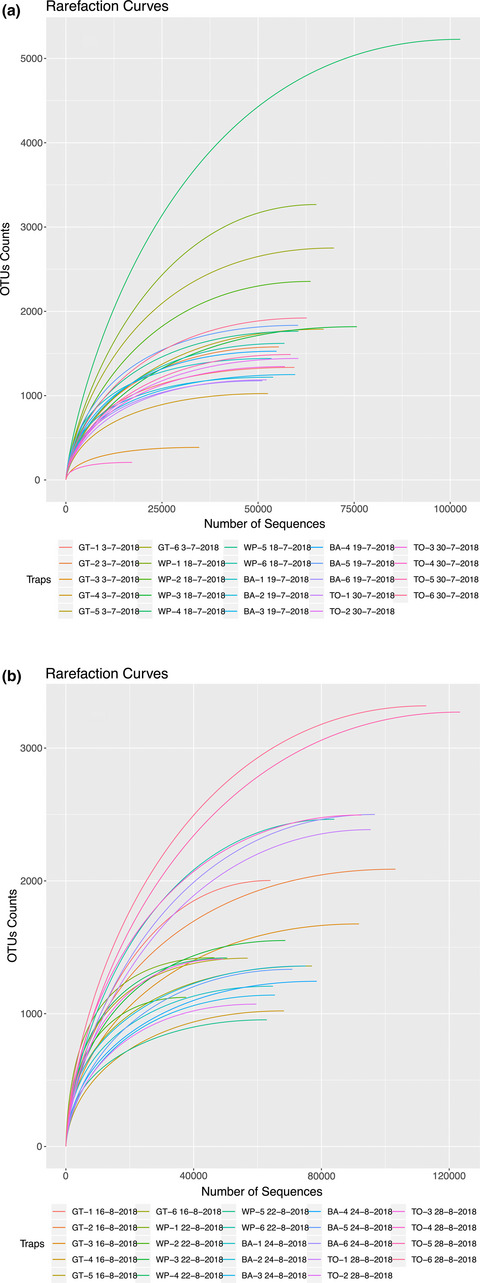
In the present study, we optimized and validated a fast and cost-effective eDNA metabarcoding protocol for biosurveillance of plant IAS and characterization of insect and microorganism diversity. Forty-eight traps were placed, following the CFIA's annual forest insect trapping survey, at four locations in southern Ontario that are high risk for forest IAS. We collected insects and eDNA samples using Lindgren funnel traps that contained a saturated salt (NaCl) solution in the collection jar. Our study results reaffirm the effectiveness and importance of integrating eDNA metabarcoding as part of identification protocols in biosurveillance programs.
Can effective population size estimates be used to monitor population trends of woodland bats? A case study of Myotis bechsteinii
- Pages: 2015-2023
- First Published: 03 February 2021

Molecular approaches to calculate effective population size estimates (Ne) are increasingly used as an alternative to long-term demographic monitoring of wildlife populations. Here, we performed a case study on an elusive woodland bat, Myotis bechsteinii, to compare the use of the parentage assignment Ne estimator (EPA) (Figure b) with the more commonly used linkage disequilibrium (LD) Ne estimato (Figure a), and assessed the impacts of deploying different overall sample sizes. Our results indicated that the LD method provided more precise estimates (known population size shown in black) and was better suited for the long-term monitoring of this species.
The phylogeny, phylogeography, and diversification history of the westernmost Asian cobra (Serpentes: Elapidae: Naja oxiana) in the Trans-Caspian region
- Pages: 2024-2039
- First Published: 22 December 2020
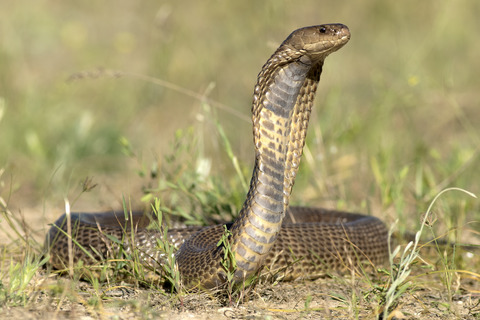
We conducted a comprehensive analysis of the phylogenetic, phylogeographic, and demographic relationships of Caspian cobra (Naja oxiana) populations based on a concatenated dataset of two mtDNA genes. Our results provided strong support of phylogeny of Caspian cobras. Furthermore, our results also highlight the existence of only one major evolutionary lineage in the Trans-Caspian region, suggesting a rapid expansion of the Caspian cobra from eastern to western Asia. We proposed one evolutionary significant unit across the Iranian range of N. oxiana for conservation efforts.
Phylogenetic relations and mitogenome-wide similarity metrics reveal monophyly of Penaeus sensu lato
- Pages: 2040-2049
- First Published: 04 February 2021
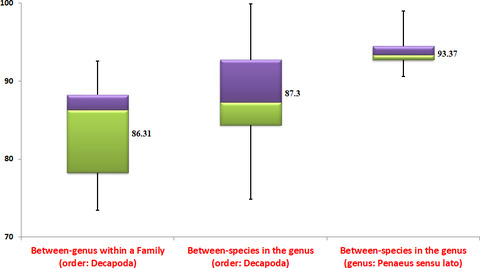
The maximum likelihood and Bayesian phylogenetic inferences based on complete mitochondrial DNA genome sequences supported monophyly of the genus, Penaeus sensu lato. The mitogenome-based similarity metrics estimated for between-genera within a family and also for between-species within a genus in the order Decapoda corroborated phylogenetic inferences drawn for Penaeus sensu lato.
Contrasting patterns in the occurrence and biomass centers of gravity among fish and macroinvertebrates in a continental shelf ecosystem
- Pages: 2050-2063
- First Published: 05 February 2021
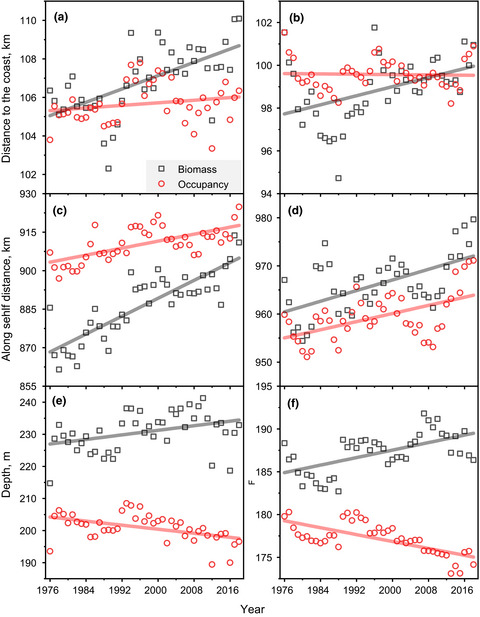
Habitat models for marine fish and macroinvertebrates were used to estimate occurrence and biomass center of gravity (COG). The COGs of occupancy and biomass habitat were separated by significant distances and trended over time. These results suggest that climate change forced change in distribution will differentially affect occurrence and biomass of marine taxa, which will likely affect the organization of ecosystems and the manner in which human populations utilize marine resources.
Ancient DNA preserved in small bone fragments from the P.W. Lund collection
- Pages: 2064-2071
- First Published: 05 February 2021
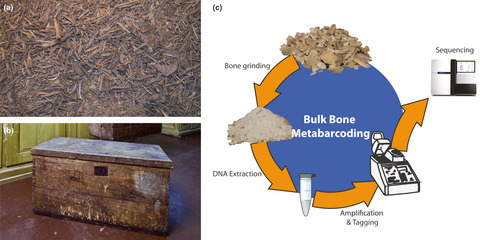
The Lund collection is one of the oldest fossil collections in the world, but it is not known whether the poorly preserved small mammal bones that constitute the majority of the collection are suitable for ancient DNA analysis. We genetically identify 17 species, representing 11 mammals, two birds, one fish, and three frogs from small fragmentary bones in Lund's collection. These results exhibit the potential of future genetic studies on the famous P.W. Lund collection.
Predator community and resource use jointly modulate the inducible defense response in body height of crucian carp
- Pages: 2072-2085
- First Published: 03 February 2021
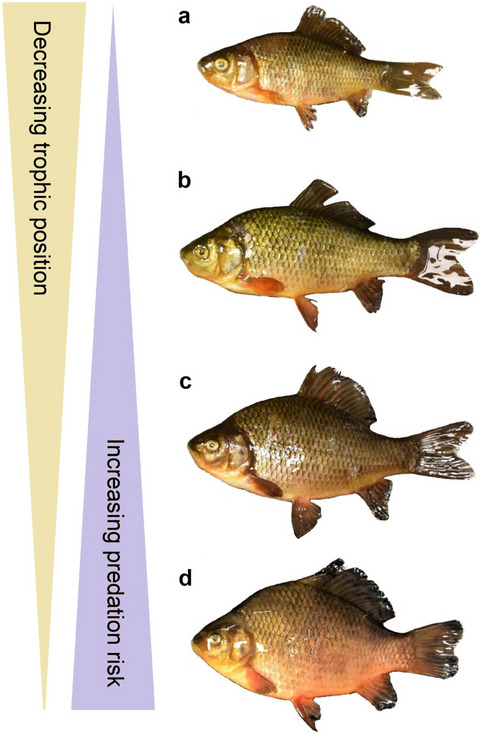
The crucian carp develops a deep body when exposed to cues from predators and represents a classic example of anti-predator defense mechanism in fish. In this study, we showed that crucian carp body depth increased with decreasing trophic position and increasing predation risk represented by predator gape size. Our results indicate that crucian carp have a fine-tuned morphological defense mechanism against predation risk, triggered by the combined effect of predator community and resource use.
Butterfly species diversity and their floral preferences in the Rupa Wetland of Nepal
- Pages: 2086-2099
- First Published: 03 February 2021

We assessed the number of butterfly species, their abundance, and their floral foraging behavior, from 28 linear transects (500 m long each) placed in a stratified and random manner throughout the study area. Five factors, that is, category of plant, flower color, corolla shape, corolla depth, and the proboscis length of butterfly species, were taken into account to assess the nectar plant choices of butterfly families. Moreover, species diversity at the family level, and overall, was determined through several indices.
Spatial phylogenetics of the native woody plant species in Hainan, China
- Pages: 2100-2109
- First Published: 01 February 2021
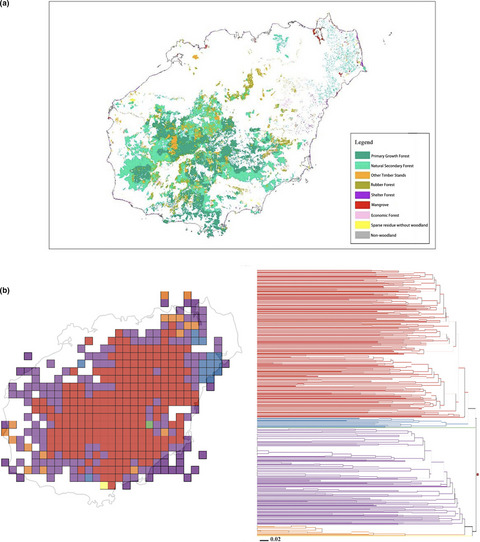
Our results reveal that the southwest of Hainan is the most important hot spot for endemism and plant diversity followed by the southeast area. The distribution of endemic species showed a scattered, rather than clustered, pattern on the island. Based on phylogenetic range-weighted turnover metrics, we delineated four major vegetational zones in Hainan. These largely correspond to natural secondary growth and managed forests (e.g., rubber and timber forests) in central Hainan, old-growth forests, natural secondary growth forest at the margins of Hainan, and the nature reserves on the island (e.g., Jianfeng and Diaoluo National Nature Reserves).
Seeing the wood despite the trees: Exploring human disturbance impact on plant diversity, community structure, and standing biomass in fragmented high Andean forests
- Pages: 2110-2172
- First Published: 01 February 2021

High Andean forests play a key role in providing ecosystem services for neighboring urban settlements. Here, we aimed to identify and understand the effects of anthropogenic perturbations on diversity, composition, and structure of plant communities, as well as aboveground biomass in high Andean forest remnants in the hinterland of Bogotá. We found that the increase of human-related disturbance resulted in less phylogenetic diversity and in the phylogenetic clustering of the woody vegetation and in lower aboveground biomass (AGB) values. As to the understory, disturbance was associated with a higher diversity, jointly with a higher phylogenetic dispersion. Interestingly, AGB was efficiently predicted by the proportion of late successional species.
Holocene chloroplast genetic variation of shrubs (Alnus alnobetula, Betula nana, Salix sp.) at the siberian tundra-taiga ecotone inferred from modern chloroplast genome assembly and sedimentary ancient DNA analyses
- Pages: 2173-2193
- First Published: 31 January 2021
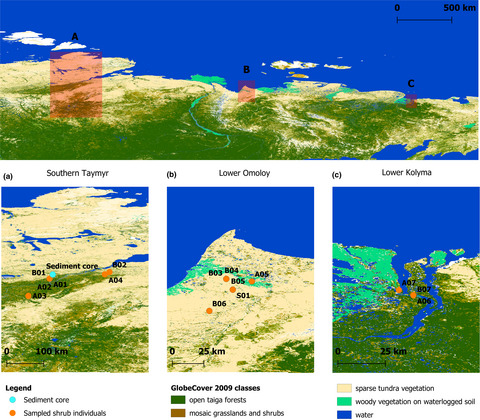
Climate warming alters plant composition and population dynamics of arctic ecosystems. In particular, an increase in relative abundance and cover of deciduous shrub species (shrubification) has been recorded. We inferred genetic variation of common shrub species (Alnus alnobetula, Betula nana, Salix sp.) through time. Chloroplast genomes were assembled from modern plants (n = 15) from the Siberian forest-tundra ecotone. Sedimentary ancient DNA (sedaDNA; n = 4) was retrieved from a lake on the southern Taymyr Peninsula and was analyzed by metagenomics shotgun sequencing and a hybridization capture approach.
Soil physicochemical properties drive the variation in soil microbial communities along a forest successional series in a degraded wetland in northeastern China
- Pages: 2194-2208
- First Published: 26 January 2021
Modeling herbivore functional responses causing boom-bust dynamics following predator removal
- Pages: 2209-2220
- First Published: 07 February 2021
Phylogeography and ecological niche modeling reveal evolutionary history of Leiolepis ocellata (Squamata, Leiolepidae)
- Pages: 2221-2233
- First Published: 20 January 2021
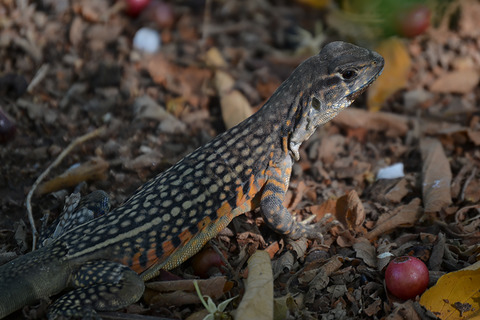
Leiolepis ocellata, a lizard species distributed in topographically diverse habitats in northern Thailand, revealed 6 haplogroups. Lineage divergences, of particularly eastern and western haplogroups of the region, coincided with the major rivers in the region (Yom river and Ping river, respectively), indicating vicariance in response to riverine barriers.
Close encounters of the fatal kind: Landscape features associated with central mountain caribou mortalities
- Pages: 2234-2248
- First Published: 04 February 2021
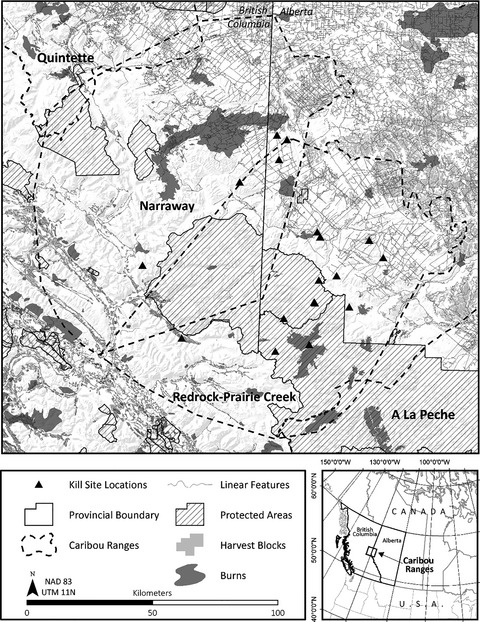
Anthropogenic disturbances associated with resource extraction activities are linked to increased predation risk and unsustainable mortality rates for woodland caribou, but few studies have directly assessed the relationships between specific anthropogenic disturbances and predation-caused caribou mortalities. We assessed the influence of habitat, terrain, and anthropogenic linear disturbance features on caribou predation risk, including data from caribou mortality sites and caribou habitat use prior to being killed by predators. We found that predation risk increased closer to pipelines, seismic lines, and streams. Within protected areas, predation risk increased closer to alpine habitat. Factors predicting predation risk differed among spatio-temporal scales and between linear feature types.
Reliability of animal counts and implications for the interpretation of trends
- Pages: 2249-2260
- First Published: 27 January 2021
Simulated heat waves reduce cognitive and motor performance of an endotherm
- Pages: 2261-2272
- First Published: 26 January 2021
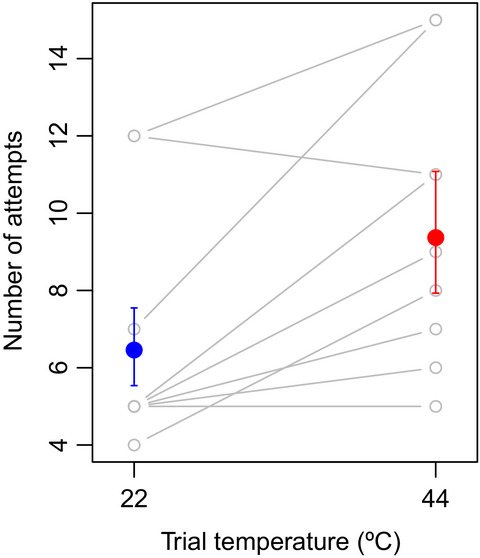
To understand how high temperatures affect cognitive and motor performance, we taught zebra finches to perform tasks and then asked whether their performance declined at high temperatures. At high temperatures, zebra finches showed significant declines in some, but not all, cognitive tasks and exhibited slower movements. We then performed a mapping study and found that zebra finches experience temperatures in the wild that caused cognitive and muscle decline in our experiment.
Hibernacula microclimate and declines in overwintering bats during an outbreak of white-nose syndrome near the northern range limit of infection in North America
- Pages: 2273-2288
- First Published: 20 January 2021
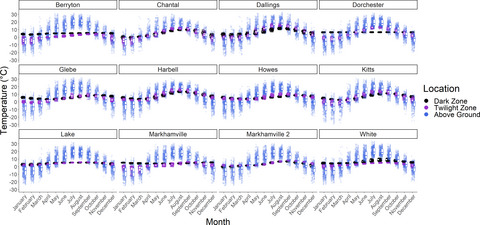
A 99% decrease in the over-wintering New Brunswick, Canada, bat population was observed between 2011 and 2015 due to white-nose syndrome. Cold hibernacula temperatures encountered near the apparent northern range limit for Pseudogymnoascus destructans does not sufficiently slow the growth of the fungus to prevent the onset of WNS and associated mortality over the winter.
Disturbance and predation risk influence vigilance synchrony of black-necked cranes Grus nigricollis, but not as strongly as expected
- Pages: 2289-2298
- First Published: 27 January 2021
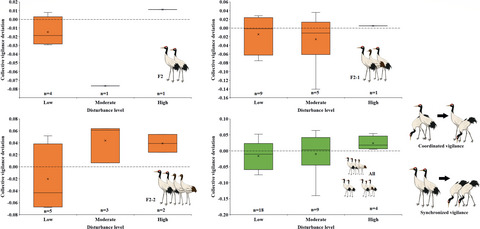
Synchronization to coordinated vigilance pattern was first reported in a single bird species, Black-necked crane Grus nigricollis. The bird showed synchronized vigilance in low disturbance areas, with fewer juveniles and far from observers; otherwise, they scanned in coordinated fashion. Vigilance could constitute a prime indicator in behavior-based species conservation; a safe distance of at least 400 m was determined and should be considered in future tourist management.
Effects of experimental watering but not warming on herbivory vary across a gradient of precipitation
- Pages: 2299-2306
- First Published: 27 January 2021
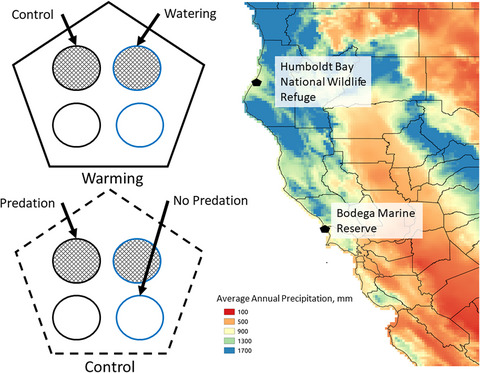
Multiple interacting climate drivers are expected to affect ecological interactions and to vary across climate gradients. In this study, we manipulate temperature and moisture a two sites across a gradient of precipitation and find that warming increases herbivory at both sites, but watering only increases herbivory at the drier site. These findings are consistent with predictions drawn from range-limit theory and the stress-gradient hypothesis.
Male-biased dispersal in a fungus-gardening ant symbiosis
- Pages: 2307-2320
- First Published: 28 January 2021
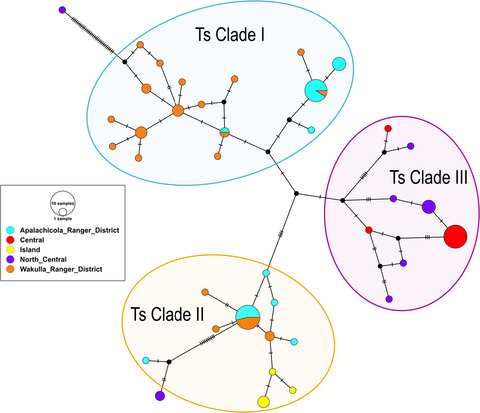
A TCS haplotype network for Trachymyrmex septentrionalis constructed with COI DNA sequences. Populations of T. septentrionalis in Northern Florida are characterized by two haplotypes found in the panhandle and another found in the peninsula. These clusters are largely nonoverlapping since only two sequences clustering with the panhandle were found in the peninsula.
Construct social-behavioral association network to study management impact on waterbirds community ecology using digital video recording cameras
- Pages: 2321-2335
- First Published: 01 February 2021
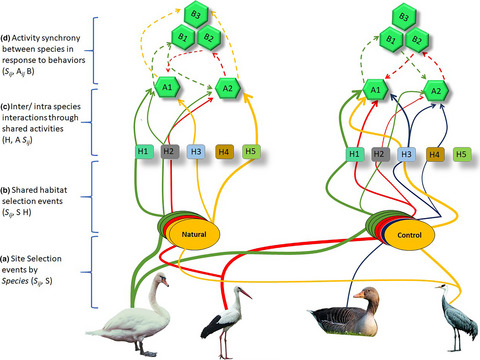
Studying social-behavior and species associations in ecological communities is challenging. We used digital video recording cameras to study social interactions and species–habitat linkages for wintering waterbirds communities in shared habitats. We built tetrapartite social-behavioral association network of wintering waterbirds over habitat (n = 5) selection events in sites with distinct management regimes. We analyzed these networks to explore the regime effect and to identify hub species and species role in activity persistence. We found that habitats were significantly different (p = .000, r2 =.278) in network composition and keystone species composition. Our SNA approach is likely to provide a practical use for ecosystem management and biodiversity conservation, where there is a need to make decisions on.
Range expansion, habitat use, and choosiness in a butterfly under climate change: Marginality and tolerance of oviposition site selection
- Pages: 2336-2345
- First Published: 11 February 2021
Plant species with the trait of continuous flowering do not hold core roles in a Neotropical lowland plant-pollinating insect network
- Pages: 2346-2359
- First Published: 10 February 2021

Plant species with longer reproductive seasons are posited to support more interactions compared to plant species with shorter reproductive seasons but this hypothesis has not been evaluated for plant species with the longest reproductive season possible at the individual plant level, the continuous reproductive phenology. Here, we use a quantitative pollinating insect–plant network constructed in tropical lowland wet forest and modularity analysis to test whether species that share the trait of continuous flowering hold core roles in mutualistic networks. Our work reveals that the continuous flowering plant species differed in some networks in their topological role, supporting specialized subsets of interactions more commonly, and that conservation of pollinating insect communities may require planting species from each module rather than identifying and conserving network hubs.
Leaf litter identity rather than diversity shapes microbial functions and microarthropod abundance in tropical montane rainforests
- Pages: 2360-2374
- First Published: 29 January 2021
Genetic studies of various Prosopis species (Leguminosae, Section Algarobia) co-occurring in oases of the Atacama Desert (northern Chile)
- Pages: 2375-2390
- First Published: 10 February 2021
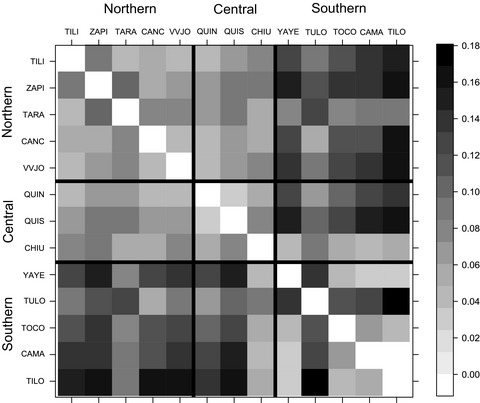
We assess the genetic diversity and the degree of differentiation among groups of Prosopis individuals of different species from Section Algarobia and putative hybrids co-occurring in isolated oases from the Atacama Desert (19–24°S) in Chile. Genetic results are discussed in relation to the fragmented landscape, considering both natural and non-natural (humans) dispersal agents that may be moving Prosopisin the desert.
Effects of forest disturbance on the fitness of an endemic rodent in a biodiversity hotspot
- Pages: 2391-2401
- First Published: 03 February 2021
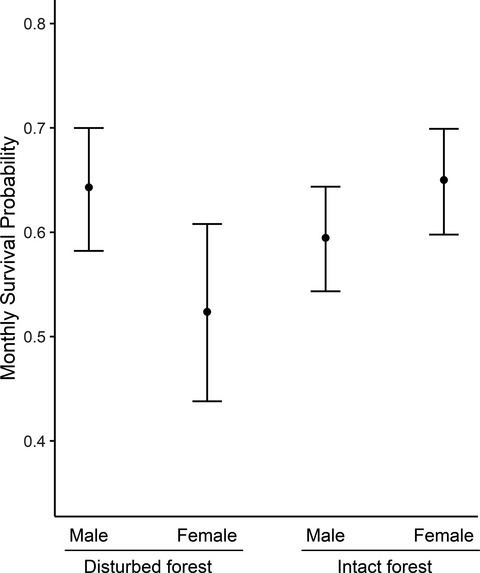
In investigating the viability of the populations of a species, demographic parameters alongside population density should be considered. We found no variation in abundance or maturation of Praomys delectorum between intact and disturbed forests, but habitat type did affect survival. However, this effect was sex-dependent since female survival was higher in disturbed forests, while male survival remained similar across the two forest types potentially due to differences in predation pressure or food availability between the two habitats.
Multicomponent shell traits are consistent with an individual recognition function of the appearance of common murre (Uria aalge) eggs: A biological replication study
- Pages: 2402-2409
- First Published: 14 February 2021

A multivariate analysis of eggshells taken from an Icelandic population of common murre (or guillemot: Uria aalge) reveals that no unexpected correlations exist between avian-perceivable eggshell traits. These results biologically replicate the conclusions of a recent eggshell trait study of Canadian common murres using the same methodology, as well as provide further evidence for the functionality of avian-perceivable eggshell traits as identity signals in the common murre.




